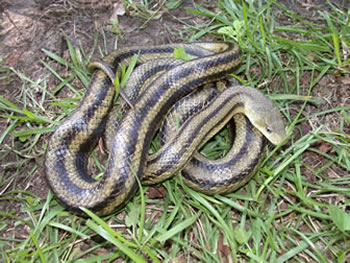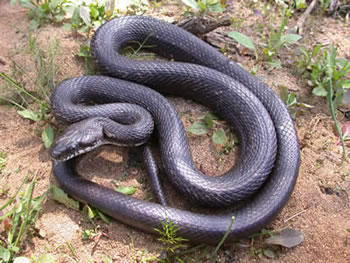Rat Snake (Pantherophis obsoletus alleghaniensis)
Rat Snake (Pantherophis alleghaniensis)
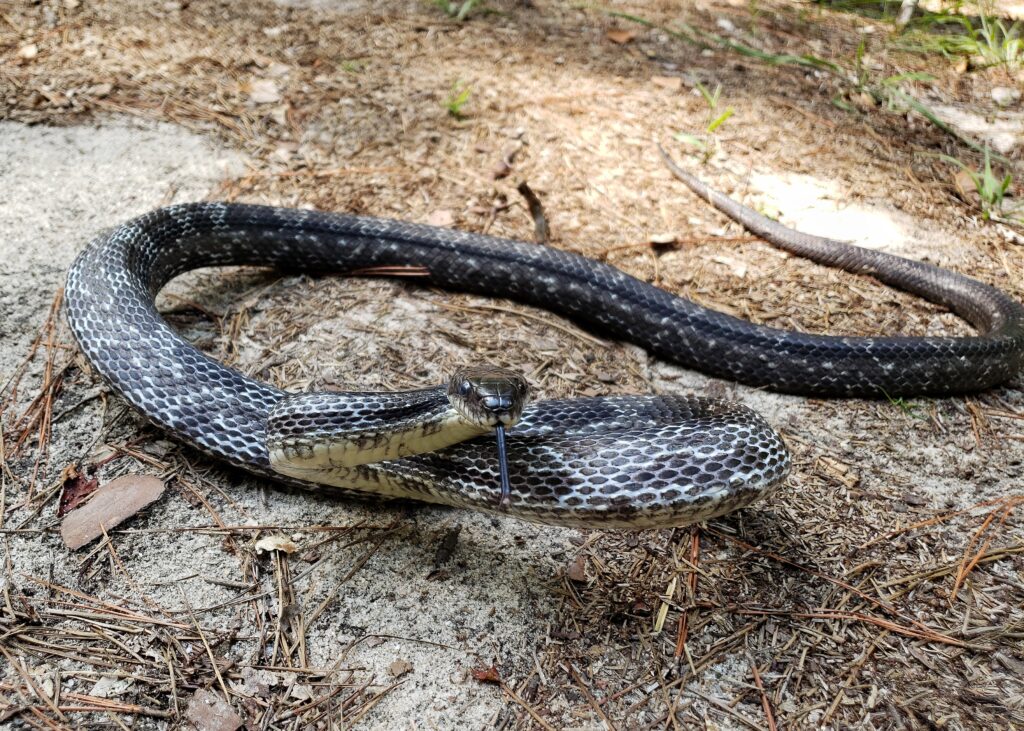
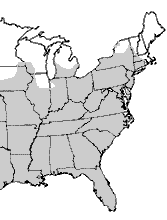
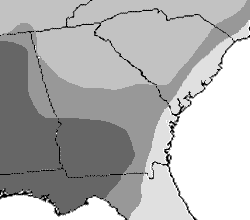
Description: Common, medium-to-large snakes of the Southeast, typically 91–152 cm (3–5 ft) long, though some individuals exceed 183 cm (6 ft). The body cross-section is loaf-shaped rather than round. Scales are weakly keeled, and the anal plate is divided.
According to The Center for North American Herpetology the eastern rat snake (P. alleghaniensis) and the yellow rat snake (P. quadrivittatus) represent subspecies of the western/central rat snake (P. obsoletus). Color and pattern vary greatly by region:
- Eastern Rat Snake (P. alleghaniensis): Often called Black or Gray Rat Snake. Found from New Jersey south through most of the Southeast (except Florida). Adults are usually black dorsally with a checkerboard-patterned belly; juveniles are boldly blotched.
- Yellow Rat Snake (P. quadrivittatus): Found in the Coastal Plain of Florida, Georgia, and the Carolinas. Typically, yellow to greenish with four dark longitudinal stripes; individuals in Florida are brighter yellow, while those in Georgia and the Carolinas are duller with heavier striping.
Range and Habitat: Occurs throughout much of the eastern and central U.S. and is one of the most widespread snakes in the Southeast. Found in a variety of wooded and forested habitats, swamps, and wetlands. Skilled climbers, frequently seen in trees, barns, abandoned buildings, and other structures while hunting rodents or birds.
Habits: Active during the warmer months; hibernate 2–4 months in winter. Primarily diurnal in spring and fall, but often become nocturnal in summer heat. When threatened, rat snakes may assume a characteristic “kinked” posture and remain motionless. They also vibrate their tails and expel foul-smelling musk to deter predators.
Adults feed mostly on rodents, squirrels, birds, and bird eggs, while juveniles consume small frogs, lizards, and small mammals. Breeding occurs mainly from April to June, though fall breeding may occur. Males may engage in wrestling combat, and during courtship often bite the female’s neck. Clutches range from 4–44 eggs, deposited in concealed, warm, and moist sites, hatching after ~60 days.
Conservation Status: Widespread and abundant across most of their range. Not protected in most states, though protected in Georgia. The greatest threats are road mortality and human persecution, despite their ecological importance in rodent control.
